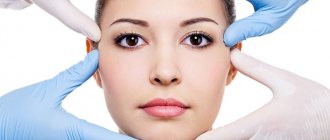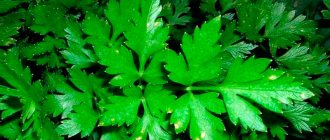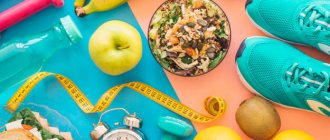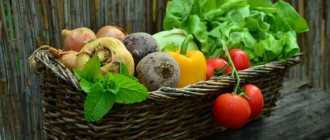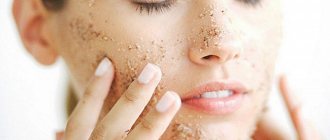Useful foods for the liver: list
The main function of the liver is to cleanse the blood of toxins that enter the body with food. It works like a vacuum, absorbing harmful substances. The slightest poisoning can change the structure of an organ. In order for its surface to remain smooth throughout your life, you need to know what foods the liver “loves” and eat them more often:
- Seaweed . Protect the liver from toxins and harmful chemicals. They contain a huge amount of selenium - a microelement, a powerful antioxidant that prevents the organ from destruction.
- Onion . Contains unique compounds that effectively fight cancer cells. Frequent consumption of onions protects against liver cancer.
- Eggs . Although doctors do not recommend eating large quantities of chicken eggs, you cannot completely give them up either. The liver constantly produces cholesterol, which is already contained in eggs, and their consumption allows the organ to work with less load.
- Sesame seeds . Able to protect against liver oxidation. Used for food, if the seeds are raw, they must be fried without oil.
- Artichoke . The product cleanses, strengthens and restores liver cells. The active ingredients of artichoke promote the production of bile and fight free radicals.
- Fennel . Contains a large amount of vitamin C and fiber, protects against chemical compounds. It is advisable to use it as a spice for intoxication. The fruits stimulate cell restoration, and the roots have a cleansing effect.
- Ginger . Promotes the outflow of bile, benefits the liver, protecting against the destructive effects of alcohol. But if you have stones or inflammation of the pancreas, you should use it with caution.
- Beans . Contains enough protein to completely replace meat without harm to the body. After all, animal protein negatively affects the liver, although it is necessary for normal functioning. Vegetable protein in beans and other legumes is much easier to digest.
- Fish fat . Contains Omega-3 fatty acids and glutathione, which are necessary for the human body, increase blood flow, strengthen the heart, therefore they are used as a supplement for circulatory diseases, diabetes and liver pathologies.
- Flax seeds . They have a large amount of nutrients, fiber, fatty acids, due to which they remove toxins and are a strong choleretic agent. Cleansing the liver occurs together with other digestive organs.
- Garlic . Improves liver function by reducing bad cholesterol levels. It is used to cleanse the body of parasites and reduce putrefactive bacteria in the intestines. Garlic activates the formation of enzymes, allicin and strong - cleanses the blood of toxins.
- Broccoli . A source of energy and vitamin E. To maintain the health of a diseased liver, it is recommended to consume broccoli 4 times a week along with garlic. Is a powerful antioxidant
- White cabbage . Included in the list of healthy products, it has a beneficial effect on liver function, promotes cleansing, normalizes cholesterol levels in the blood, and improves digestion.
- Cauliflower . Promotes the removal of toxins (carcinogens), increases the amount of natural absorbent. The composition contains vitamin A, magnesium salts, iron in an easily digestible form. For a therapeutic effect, it is recommended to use it daily in any form.
- Kale cabbage . It has a positive effect on the functioning of the liver and intestinal microflora. With regular use, it can stimulate the digestive system, remove toxic substances, and help with inflammation of the pancreas.
- Brussels sprouts . Helps the liver function normally by promoting detoxification. In modern dietetics it is assessed as a rich source of vegetable protein.
- Collard greens . Has high cleansing properties. It contains many essential fatty acids, which makes it beneficial for the cardiovascular system. Nutritionists include this product in a therapeutic diet for liver diseases and for prevention.
- Basil . Included in the list of herbs for treating the liver. It normalizes metabolic processes in the body, so it is recommended for use when cleansing the blood of toxins. Basil is useful when eaten fresh.
- Parsley . Please note that it is rich in vitamins C, P, A, B12. 50 g of parsley with olive oil per day is enough to prevent cell aging, protect the liver from the effects of toxins and free radicals, and maintain the immune system at the proper level.
Sugar and appearance: is there a connection?
No one disputes that cosmetics and procedures have a positive effect on our appearance. A well-groomed woman is always more pleasant to look at than one who neglects care. This is why we love creams, serums, toners and oils, because they help us have clear, glowing skin, taking care of which is part of our daily routine. With all my love for high-quality, natural care products, I do not want to overestimate their importance. What is applied to the face still has less effect on the tone and number of wrinkles compared to what we consume internally. Today we’re talking about one of the worst enemies of smooth and toned skin – sugar.
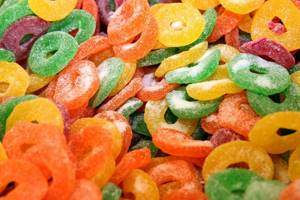
This is a sensitive topic, I understand. In matters of nutrition, people show the greatest emotionality and inflexibility. As for sweets, many do not spend a day without it, not even for a second allowing themselves the opportunity to deprive themselves of this pleasure. This is not alcohol or smoking! My case. Not today, five years ago.
Actually, I decided to quit sugar for reasons related to health rather than in the struggle for smoothness and oval. After studying this issue, I did not find a single reason to continue to be friends with sweets, or rather with refined sugar. This seemingly harmless taste habit is not at all harmless upon closer examination.
Does sugar do anything to our appearance? It turns out that yes, he does.

Collagen and elastin at gunpoint
When sugar enters the bloodstream, it attaches to proteins and forms new toxic molecules called glycation end products (or glycation end products). “These molecules accumulate in the body with a domino effect of damaging adjacent proteins,” explains renowned doctor and dermatologist Fredric Brandt . The most susceptible to such damage are collagen and elastin, protein fibers that are responsible for the elasticity and smoothness of the skin. The once springy and elastic fibers of collagen and elastin become dry and brittle, leading to the formation of wrinkles and loss of tone. According to a study published in the British Journal of Dermatology , this effect begins on average after 35 years of age and increases rapidly over the years.

The strongest collagen suffers
Another interesting fact is that sugar doesn’t just affect collagen, it affects a specific type of collagen. The largest amounts of this protein in humans are collagen types I, II and III, with type III being the most stable and durable. During the process of glycation, type III collagen is converted into type I collagen, which is much more fragile. “When this happens, the skin looks and feels less elastic,” says Dr. Brandt.
Antioxidant protection is at risk
The human body produces free radicals both as a result of internal processes (digestion of food) and as a result of external factors (ultraviolet light, pollution, cigarette smoke). Free radicals cause damage to the body's cells, including skin cells. Molecules formed during glycation damage the body's internal antioxidant defenses. And this makes the skin less protected from external negative factors, including ultraviolet radiation, which is one of the main causes of skin aging.

Sugar makes skin problems worse
In addition to the fact that sugar directly affects the acceleration of skin aging processes, the glycation process worsens its condition if a person already suffers from redness or acne. Insulin surges caused by sugar entering the blood are perceived by the body as internal inflammation. And if inflammatory processes occur in the body, then this inevitably affects the largest organ of a person - his skin. Rashes on the face, redness, acne are all consequences of internal inflammatory processes. And inflammation leads to damaged capillaries, loss of elasticity and cell destruction. This all contributes to aging.
In terms of the effect of sugar on the skin, I am a direct witness, since I have thin skin with closely spaced blood vessels. In dealing with my red cheeks, I have been using one brand for a long time that has an entire line for sensitive skin. I had to think hard when my flushing reached its climax, despite the faithful use of an entire arsenal of soothing agents. Everything returned to normal later, with a radical revision of my own diet and a complete, absolute refusal of sugar.
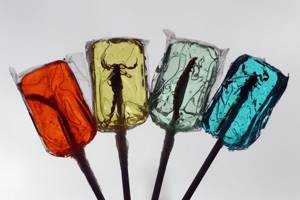
What scientists say
At the molecular level, scientists associate human aging with the gradual shortening of telomeres, the repeating DNA found at the ends of chromosomes. As long as a cell divides, it is alive. But with each division, the telomeres are shortened, which is why the cell will one day lose the ability to divide. Then she will begin to age and inevitably die. Telomeres become shorter with age, so scientists believe that their length can indicate the biological age of the body.
Last October, a study by scientists at the University of California-San Francisco ( UCSF ) was published indicating that people who regularly drink sugary drinks (fruit drinks, sports drinks, energy drinks and others) have shorter telomeres. This means that they are not only more prone to chronic disease, they also have an older biological age due to premature aging of immune cells. There is something to think about.

There is a solution
For the sake of health or for the sake of youth, or for the sake of both, I strongly recommend gradually reducing your sugar intake, preferably to zero. This is perhaps one of the most important decisions a person can make for their health. Don't look at your grandparents who ate sugar and had good health. During their youth, there was not such a huge amount of refined products as there is now. These days, it's completely normal to eat a burger and wash it down with a Coke, even though the combination contains more than 10 teaspoons of hidden sugar. How much more of it will be eaten per day? Our grandmothers did not eat like that.
Fortunately, the process is reversible, and everything is not so bad. A person has only one innate taste habit, for mother's milk. All other taste habits in humans are acquired, which means that if desired and with the necessary willpower, they can be changed. I stopped eating sugar decisively and irrevocably; there is never any sweets in my house. Yes, I can very rarely indulge myself in the form of homemade baked goods when visiting, but nothing more. It's hard for me to say whether I would have wrinkles now if I continued to eat sugar, but I know that my skin no longer looks inflamed and reactive. And I think that over time I will look better and better than the person who would continue to eat refined sugar.
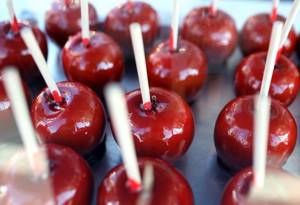
Three practical tips
- Find a healthy replacement for the usual sweets made from refined sugar, these can be dried fruits, honey. I sometimes buy raw food candies and snacks, and occasionally make raw food sweets. And it's very tasty.
- Increase your consumption of foods rich in antioxidants (fresh berries, fruits, vegetables, green tea).
- Pay attention to “hidden sugar”. Many ready-made and semi-finished products, even the most unexpected ones, contain sugar. If you pay attention to this, many surprises await you.
Read even more interesting articles on Alexandra Novikova howtogreen.ru.
What products are suitable for cooking
Fish and meat are included in the list of foods that are beneficial for the liver, because these are the main components of the diet of many people. But since fatty foods should be excluded, you need to choose low-fat meat and fish varieties:
- sea fish: hake, cod;
- turkey meat;
- beef;
- chicken.
We must not forget about kefir, fermented baked milk or yogurt, even if this is not a very favorite product. They are an important source of protein and easily digestible amino acids. For normal liver function, it is useful to drink low-fat yoghurt, yogurt, ayran, eat cheese, low-fat cottage cheese and other fermented milk products every day. Do not drink milk with food - it should be drunk separately.
Salads from fresh vegetables and fruits are a source of useful minerals, vitamins, and vegetable proteins. The basis of the diet should include:
- red beets;
- green apples;
- bananas;
- spinach;
- walnuts;
- tomatoes;
- cucumbers;
- pumpkin and other melons;
- avocado;
- citrus.
Opportunistic microflora
Normally, many microorganisms live in the body in close friendship with us. When their environment changes, they may become “worried.” As a result, their behavior evolves. They begin to actively multiply and cause harm to our body. If excess sugar accumulates in the intestines, flora overgrowth can occur. In addition, fermentation processes are activated, which further stimulate their growth and interfere with the normal functioning of the digestive organs. This condition always has a detrimental effect on external manifestations. The color of the skin suffers (it becomes pale), its elasticity (decreases), and foci of inflammation appear.
Excessive growth of microorganisms leads to disruption of the gastrointestinal tract and the absorption of various vitamins, macro- and microelements. This, in turn, affects the condition of the hair (they become dull and may begin to fall out) and nails (they break).
With a high content of gluten and sugar-rich foods in the diet, overgrowth of candida occurs (she also loves buns!). This provokes the development of food intolerance by increasing intestinal permeability. As a result, large molecules, microorganisms and toxins go directly into the bloodstream. This inevitably leads to skin problems (acne, eczema, psoriasis, alopecia). In addition, various autoimmune processes arise (allergy, multiple sclerosis, diabetes mellitus and others).
Consumption of large amounts of dairy products (with age, the amount of the lactase enzyme, which can break down lactose, actively decreases) also leads to excessive growth of pathogens and fungi, irritable bowel syndrome, the development of autoimmune diseases (see above) and inflammatory processes in the body, fluid stagnation. Very often we can observe an exacerbation of acne and increased manifestations of cellulite.

Beverages
Drinks play an important role in liver function. Everyone already knows what harm alcohol, strong teas and coffee cause to the organ. What you need to drink to improve liver function:
- Green tea. Contains antioxidants that help filter blood.
- Compotes from dried fruits or fresh fruits. Saturate the body with useful substances.
- Herbal flower tea. Has a healing effect.
- Mineral water with medicinal salts. Optimizes metabolic processes, helps with any liver diseases (hepatitis, cirrhosis, obesity).
- Natural juices (in the morning on an empty stomach).
- Rose hip decoction.
Harmful foods for the liver
It is easy to avoid liver overload if you exclude certain foods from your daily diet. The enemies of the organ are lard, butter, margarine, and mayonnaise. Also not the healthiest foods are hot spices, smoked meats, baked goods, and fatty foods.
If there is a risk of developing liver pathology, it is advisable to exclude vegetables with a strong smell - radish, cilantro, and radish - from the diet. Acidic foods won’t do any good either, so it’s better to avoid cranberries, kiwis and others.
Even if you eat healthy foods, but overeat every day, especially at night, you should not hope that you will remain healthy for a long time. Moderation in diet will allow the liver to work without stress.
Why does the liver hurt after eating and what to do?
The causes of pain in the liver area, which intensifies after eating, can be:
- increased liver volume (may indicate the initial stage of cirrhosis);
- cholelithiasis;
- hepatitis (including drug-induced).
But you need to understand that there are no nerve endings in the liver itself. Accordingly, the organ itself cannot “sick.” But as the volume increases, it puts pressure on the peritoneum, vascular nodes, and other organs, which causes a feeling of heaviness and pressure. What to do in such cases?
Emergency assistance includes:
- temporary refusal of food;
- drinking plenty of water;
- taking activated carbon or any other sorbent that accelerates the removal of toxins from the digestive system.
And then, as soon as possible, seek help from a doctor and undergo an examination. In this case, a differential analysis is used to exclude the possibility of acute inflammation of appendicitis (the symptoms are very similar). The exact cause of pain in the liver can only be determined after receiving the results of an analysis of stool, urine and blood, as well as an ultrasound examination of the organ.
Video: the healthiest foods for the liver
In our frantic life, we continually overload our poor liver. Either we’ll eat a piece of cake after a hearty lunch, or we won’t be able to resist a shish kebab oozing with fat... He who is without sin, let him throw a skewer at me. And the environment, to put it mildly, is not encouraging. All heavy metals and radionuclides also pass through the liver. She, poor thing, endures and endures, and even rebels. And you will get heaviness in your side and bitterness in your mouth. But this is what our natural “filter” will help to put in order, says our expert, nutritionist-gastroenterologist Svetlana BEREZHNAYA. So, the healthiest foods for the liver: 1. Pumpkin in all forms (even porridge, even pancakes), pumpkin seeds. 2. Vegetable soups - vegetarian or with strained meat broth. 3. Lean light varieties of meat (veal, turkey, chicken breast) boiled, baked without oil or steamed cutlets. 4. Low-fat fish (cod, pike perch, carp, navaga) steamed or baked. 5. Cottage cheese with a fat content of less than 2% (100 - 200 g per day), yogurt, tan. 6. Porridge: buckwheat, oatmeal, cereal flakes. 7. Vegetable oils, especially olive. 8. Boiled vegetables, if well tolerated - in the form of fresh salads with butter. 9. Dried apricots, figs (can be in the form of dried fruit compote). 10. Kissels, jelly, puddings with blueberries. 11. Grain bread, preferably dried. 12. Decoctions of rosehip and chamomile. Proven folk methods of cleansing Peel several heads of beets, cook for two hours until the vegetables become a homogeneous mass. Drink the resulting decoction three-quarters of a glass several times a day for 2 weeks. Corn silk has a good effect. They can be brewed and drunk like tea, advises herbalist Elena KORSUN. You can also prepare a decoction of oatmeal or buy the pharmaceutical ovesol. A drink made from fresh vegetables and herbs has a good effect on the liver - carrots (200 g), parsley (50 g), celery (150 g), you should drink it every day for a month in the morning on an empty stomach. FACT The liver is the largest organ in the human body and can weigh up to 1.5 kg. Its cells - hepatocytes - are responsible for processing proteins, carbohydrates, fats and removing toxins. The liver has the ability to heal itself. Even a completely removed lobe is “built” anew after a few weeks. But, unfortunately, with advanced hepatitis and cirrhosis, liver cells are no longer restored. BY THE WAY When is “spring cleaning” necessary? If a modern person breathed clean air, ate exclusively natural foods, did not drink, did not smoke, did physical exercise every day, and did not take medications, then he would not need any “cleaning” and would even be contraindicated. But in reality, alas, a lot of factors around us lead to the accumulation of harmful substances in the body. And our self-cleaning mechanism does not always cope with such a load. Therefore, toxins accumulate in tissues and blood vessels, interfering with the normal functioning of the body and causing premature aging. There is even a medical term - toxemia, that is, the accumulation of toxic substances in the body. And doctors advise giving your body a “spring cleaning” once every six months. There are many methods of cleansing, each with its own pros and cons. Clinical detoxification methods (for example, colon hydrotherapy) are effective, but have many contraindications, are quite expensive and unpleasant. In addition, to get results, you need to complete a course of 7–10 procedures, and not everyone has time for this. Dietary supplements may simply be ineffective, or they may cause harm, for example, damage to the kidneys. One of the latest inventions in the field of detoxification is a patch impregnated with vasodilating and sorbing substances. It works on the principle of reflexology.
Reviews
We've compiled a list of 14 of the best foods that activate the production of liver enzymes, help with natural liver cleansing, and gently remove harmful waste and toxins.
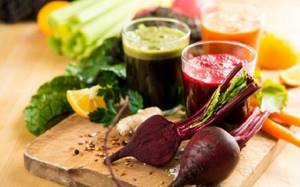
Today, many people have liver problems, but may not even know it. For example, signs that the liver is crying out for help may include troublesome bloating, trouble digesting fatty foods, acid reflux/heartburn, age spots on the skin, acne, and increased sweating.
We've compiled a list of 14 of the best foods that activate the liver's enzyme production, aid in its natural cleansing, or do some of the work for the liver, removing harmful waste and toxins from the body.
1. Garlic
Garlic literally contains everything we need to activate liver enzymes that will help our body rid itself of toxins. It also contains high amounts of allicin and selenium, two components that help in cleansing the liver. By the way, the allicin content in garlic increases several times if you chop it finely or mash it and let it sit for a while.
2. Grapefruit
Thanks to its high content of vitamin C and antioxidants, grapefruit accelerates the natural cleansing processes in the liver. A small glass of freshly squeezed grapefruit juice will help increase the production of detox enzymes in the liver, which also help get rid of carcinogens.
3. Beets and carrots
Both root vegetables are famous for their high concentration of plant flavonoids and beta-carotene, so consuming fresh beets and carrots, as well as their juices, helps stimulate liver function and cleanse it. By the way, fresh beetroot has a powerful cleansing effect, so you should start drinking it in small quantities.
4. Green tea
Our liver “loves” foods rich in antioxidants - this includes green tea, rich in catechins. These compounds help improve liver function, providing a mild cleansing effect. Did you know that green tea with added milk has a good calming effect due to the content of a special substance - L-theanine?
5. Leafy green vegetables
One of our most powerful liver cleansing allies is greens, and they can be eaten fresh, cooked, or juiced. The extremely high concentration of chlorophyll in greens removes toxins and heavy metals from the blood, and also activates the liver's protective mechanism. Add more healthy arugula, spinach, chicory to omelettes and vegetable salads - even dandelion leaves will come in handy.
6. Avocado
Avocado is not only a helper to our skin and cardiovascular system, but also to the liver. It contains special substances that help our body produce glutathione, a compound that can remove toxins from the liver. A delicious way to enjoy avocado this winter and support your body is to make guacamole, rich in vitamin C and healthy fats!
7. Apples
Thanks to their high pectin content, apples are able to “bind and neutralize” toxins and cleanse our gastrointestinal tract. This, in turn, makes life easier for our liver and reduces its overall burden of detoxing the entire body - one of the many reasons to eat an apple a day.
8. Olive oil
Cold-pressed oils such as olive, hemp and flaxseed are great for the liver when used in moderation. By providing a certain supply of lipids, they help the body eliminate harmful toxins. Thus, they relieve some of the tasks from the liver, so it’s worth dressing your favorite vegetable salad with them more often.
9. Alternative cereals
Such undeservedly rare cereals on our table as quinoa and millet, as well as buckwheat, do not contain gluten - a protein that is found in large quantities in wheat and causes trouble for our liver. An original plus - using quinoa and millet, you can prepare sweet porridge for breakfast, a warm salad, cereal soup, and a nutritious side dish for meat.
10. Cauliflower and broccoli
The fact is that cruciferous vegetables increase the production of liver enzymes, which help get rid of carcinogens and other toxins from our bodies, significantly reducing the risks associated with cancer. It is also a wonderful light side dish or base for a hot dish.
11. Lemons and limes
These citrus fruits contain a very large amount of vitamin C, which can bind toxic substances into compounds, facilitating their further removal from the body. Even a small amount of freshly squeezed lime or lemon juice in the morning helps stimulate the liver.
12. Walnuts
By supplying our body with large amounts of the amino acid arginine, walnuts help the liver detoxify ammonia. Walnuts are also rich in glutathione and omega-3 fatty acids, which support normal liver cleansing functions. Make sure you chew the nuts well before swallowing them - this will make it easier for your body to absorb these substances.
13. Cabbage
The fact is that cabbage in any form helps stimulate the activation of two important liver enzymes that help get rid of toxins. We try to eat more fresh cabbage salads, soups, and crunchy sauerkraut.
4. Turmeric
A favorite spice for the liver, turmeric, helps to cleanse the liver by increasing the production of enzymes that actively flush out carcinogens from our body. Try adding a pinch of turmeric to lentils, stews or vegetarian vegetable dishes and your liver will thank you.
Alcohol, fatty foods, chemical additives in food, medications - this is not a complete list of the enemies of our liver. But, fortunately, this organ also has many friends!
AGE products: the role of collagen and glucose in glycation processes
Collagen is one of the main proteins of the skin, as well as tendons, ligaments and bones, accounting for 20-30% of body weight.
In the normal state, cross-links (covalent bonds) exist between collagen molecules, which give collagen fibers the necessary mechanical properties.
However, with age, the number of cross-links between units increases. This process, which occurs with the participation of glucose, occurs more intensely in patients with diabetes mellitus.
Maillard's theory states that collagen crosslinks are formed as a result of the damaging effects of monosaccharides.
It begins with reversible glycation - reduced sugar (glucose, fructose, etc.) is added to the terminal α-amino group of the protein. As a result, a fairly diverse group of substances is formed, collectively called Advanced Glycosylation End-products (AGE). AGEs slowly accumulate in tissues and have many negative effects, in particular, they promote the formation of cross-links between collagen fibers. And this is fraught with inflammatory reactions, oxidative stress and vascular sclerosis. The harm of sugar to the body: do sweets always have bitter consequences?
